We visited a marvellous Devon primary school, Landscore, who we have been sharing stories with ever since we sailed from the UK to work in international conservation in 2008. We were really excited to meet up with their Headmaster Mr Read again, as well as all the teachers and school children. The children asked us loads of fab, juicy, questions. We love asking questions and so are delighted that more have arrived! Check out our answers below……………




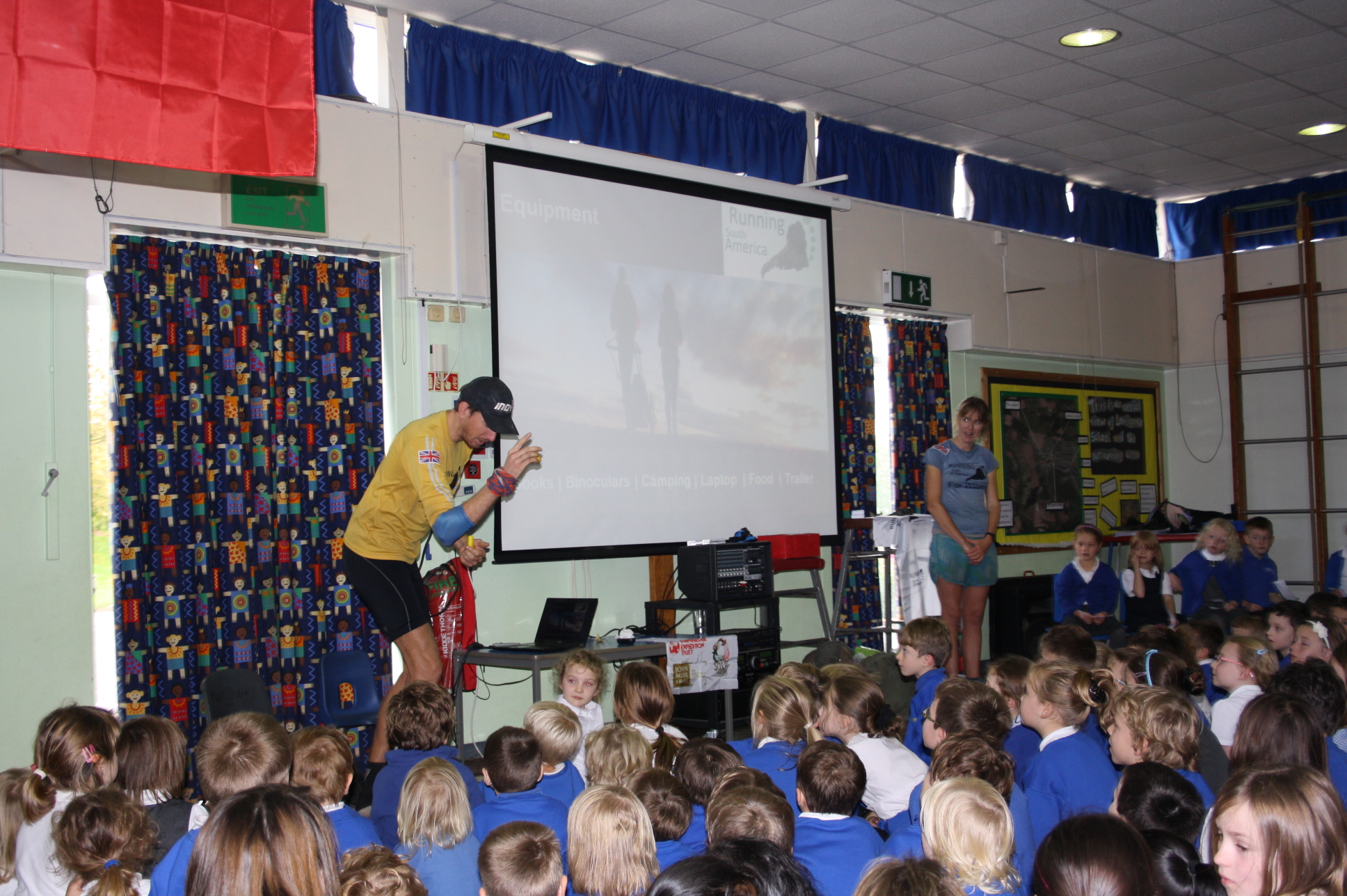
From Mrs Houston’s Class (Year 2)
Q.1.How many schools did you go to in South America? (Archie)
We had a fantastic time, Archie, visiting 27 different primary and secondary schools, colleges and universities in South America. Some were in the middle of massive cities such as Manaus, a huge city of over 2.3 million people which lies in the middle of the Amazon Rainforest, Brazil! Others were tiny countryside schools, much smaller than Landscore, such as in Bolivia south of Trinidad, where we found a school in a massive ‘estancia’ (farm) with only 10 children in it!

Q. 2. How many times did you stop for a rest – how many overnight stops did you make? (Pawel)
Well, Pawel, we swapped our shoes every 5 miles of our daily 20 mile run and took a little rest each time while we ate a snack and drank some water.
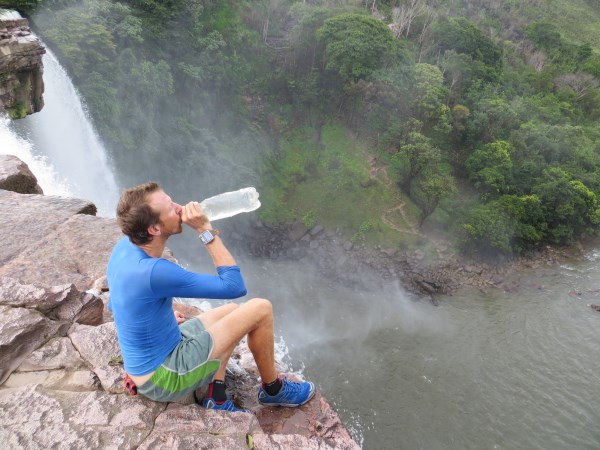
We needed to swap our shoes as we were running in ‘barefoot shoes’, shoes that are like little slippers, that are very light and feel like you are not running in shoes at all! We liked wearing them as they helped us to run naturally and helped prevent injuries. Pulling our trailer, however, was not very natural, so we swapped to a shoe with a small heal to help protect the tendons in our legs whenever it was Dave or my turn to run with the trailer.
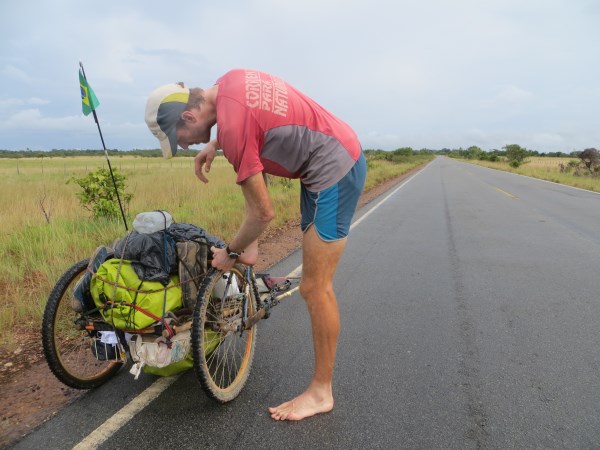
We also stopped if we saw any amazing wild animals.
Every night, of the 332 running days, we stopped to sleep by the side of the road. This varied from rainforest, moutain-top, desert, field, riverside, police station, bus shelter to school! We also stopped in towns or communities to talk to schools and buy food or kit for the next running leg.
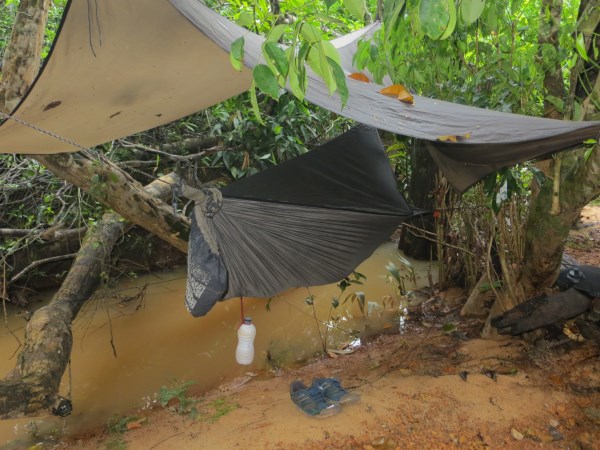
Q. 3. How many different places did you go to and which order? (Ben) ( we would like to plot it on a map so we can track your route (Mrs Houston), and how long in each place did you stay? (Morgan V))
First of all, Morgan V: the amount of time we stayed in each place varied depending on what we had to do. Sometimes we would be speaking to schools, radio stations or even the government, so would stay a few days in a town. Other-times we ran through as quick as our legs could carry us, only stopping to pick up some fresh vegetables, local meat, pasta and rice, so that we would have more time in the countryside to meet the animals!
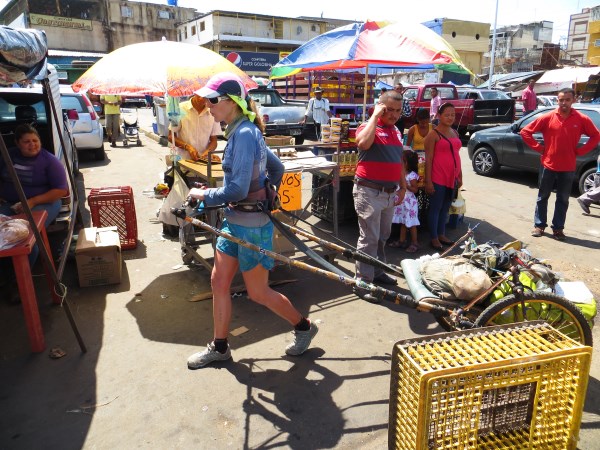
Q. 4. OUR ROUTE THROUGH SOUTH AMERICA
We started at the southerly-most point of the South American continent, Cabo Froward, Chile. This is about 70 miles south of the southerly-most city, Punta Arenas, Chile.

We then ran to Puerto Natales, crossed the border into Argentina to Chalten to avoid the southern ice sheet of Chile. We then crossed back into Chile to Villa O’Higgins and the start of their mountain road, the amazing Carretera Austral, made of mainly gravel and stones that threads through forest.
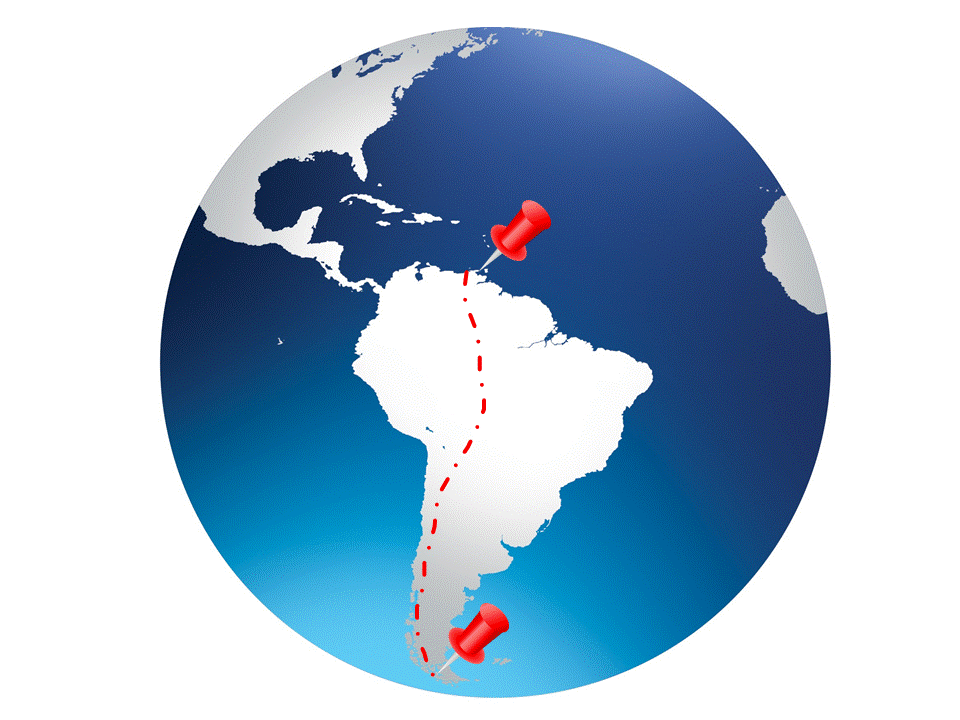
Next stop, the sleepy village of Cochrane, then into the guanaco-filled Chacabuco Valley, where we stopped to meet our charity Conservation Patagonica whom we are raising money for to protect the land for rheas (large flightless birds, like ostriches) and other stunning animals. (Guanacos are a camel-like mammal and relative to the llama)

Next to Coihaique where we found wind turbines and a British man who has decided to live in Chile forever, to work as a carpenter, tell people about its amazing wild areas and of course learn the national language, Spanish.
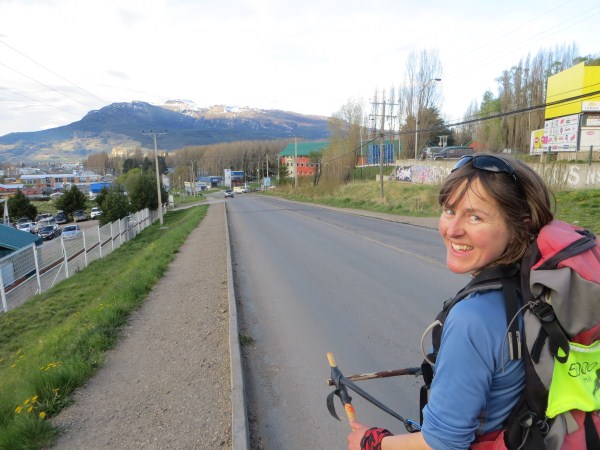
Next to Puerto Montt then across the border, passed the monkey-puzzle trees (native to Chile and Argentina) into the Argentinian ski town of San Carlos de Bariloche.
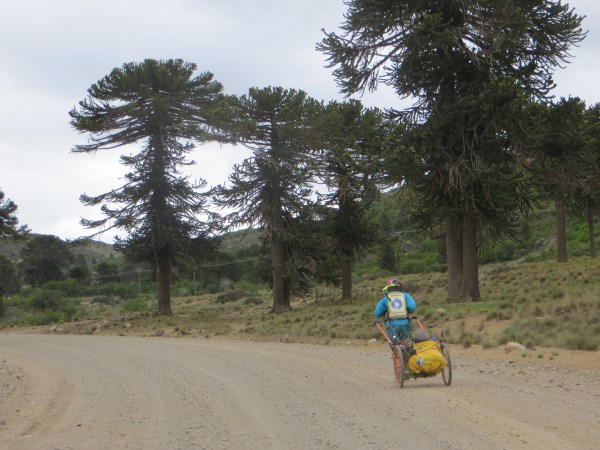
Argentina is the second largest country (after Brazil) in South America and we ran nearly the length of it, for over five months, through snow, ice, hurricane-force wind, hale stones, to very hot dry areas where we ran through salt pans and nearly fried in the sun!
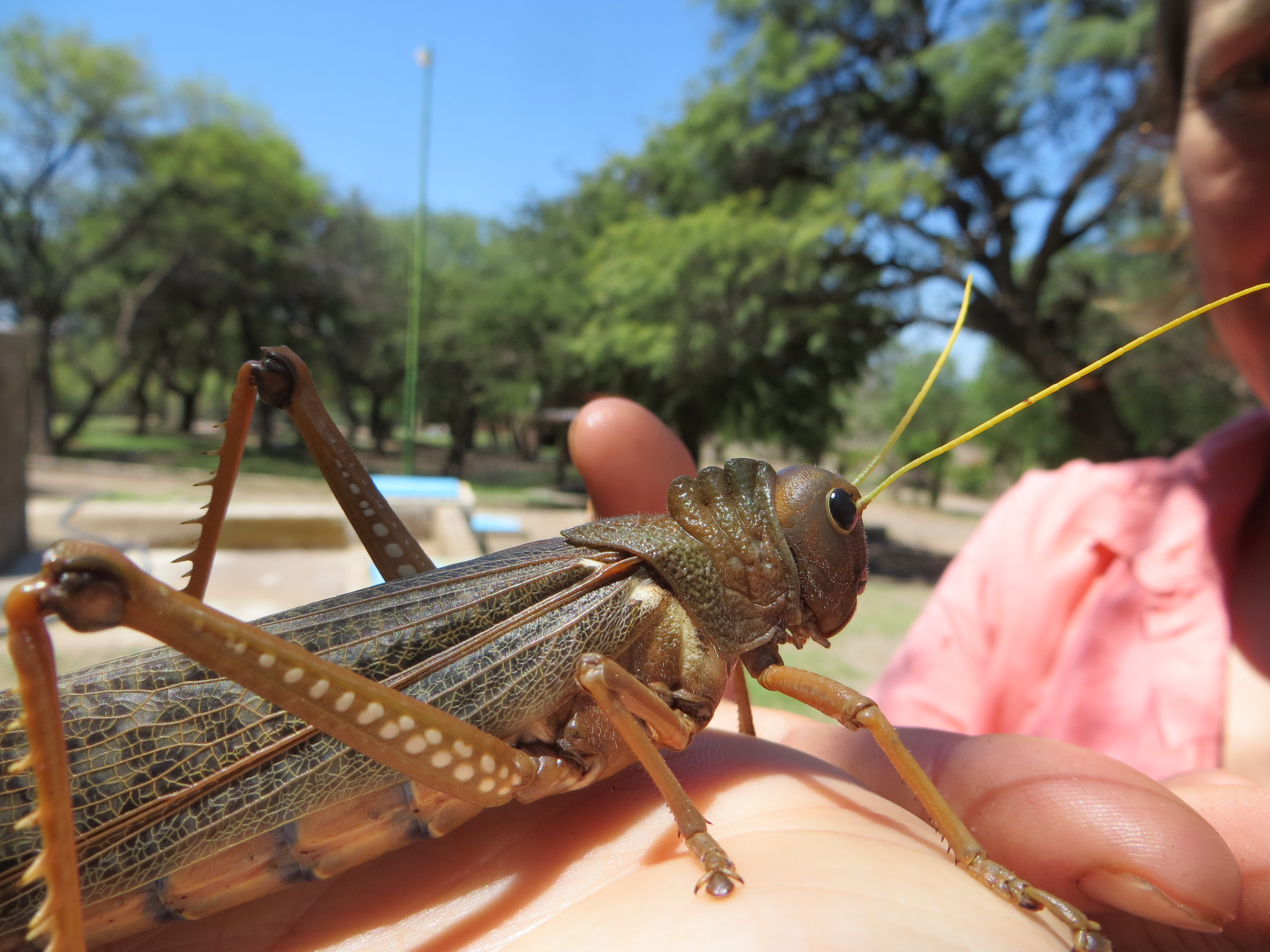
From Bariloche we travelled north crossing the Andes mountain range and their foothills: San Martin de los Andes, Las Lajas, Chos Malal, (passed Volcan Tromen– where we nearly got swept away by the fierce wind!) Bardas Blancas and then finally ran down from the Andes into San Raphael, the wine growing area of Argentina.
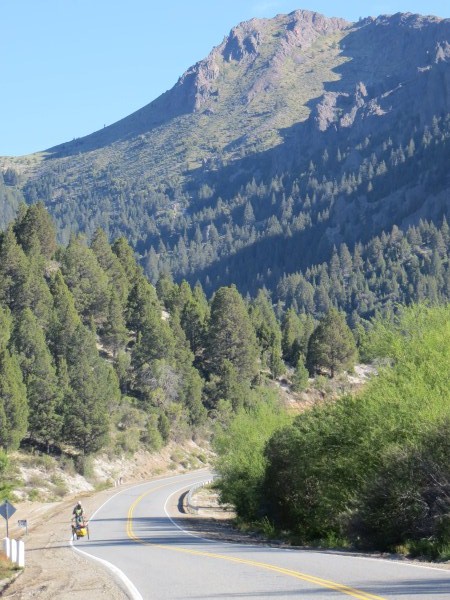
Next came a long, lonely, road with giant grasshoppers and stick insects to the city of San Luis. But just before that, we ran through Beazley a little settlement with a railway built by the British! After San Luis, it became more and more hot, with many electric storms as we ran through a thorny woodland called ‘chaco’. Next Quines, Ulapes, Olta, Chamical, La Rioja, Catamarca and then into the city of San Miguel de Tucuman where it was becoming very steamy- humid and hot. We then ran to Salta and finally the border town of Yacuiba, Bolivia, yay!
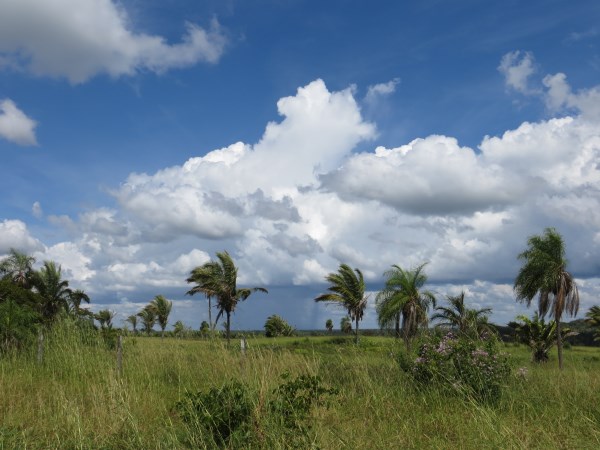
In Bolivia we ran north to Santa Cruz, San Roman, San Pablo, Santa Maria, Trinidad, San Ignacio, San Borja, Santa Rosa, Riberalta and Guayaramerin. We ran through rainforest, flooded savanna and met some of the most threatened parrots in the world- the blue-throated macaws. Our other charity Birdlife International is helping to save them and their threatened home.

We then crossed into Brazil where the national language is Portuguese andd ran to Porto Velho, Humaita and Manaus. In Manaus we crossed the mighty Amazon river by boat- it is enormous- as wide as a sea! We ran through the entire Amazon basin with clouds of butterflies, which starts in Bolivia and ends in northern Brazil. Then we ran north to Boa Vista, where the rainforest becomes grassland (savanna) and just before the city we saw our giant anteater!
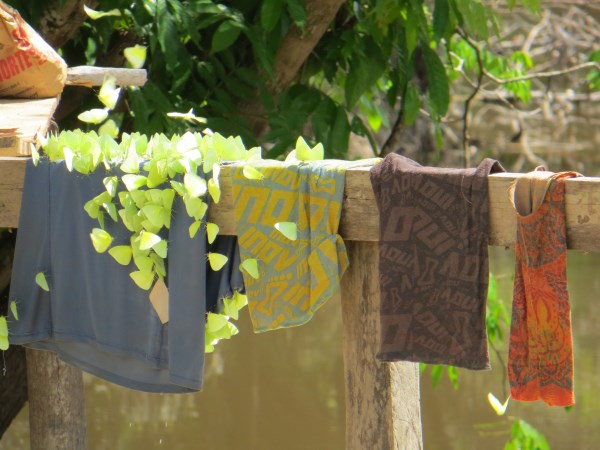
Next to the border town of Santa Elena, Venezuela, our final country. Here we ran through mountainous and savanna with millions of fire flies sparkling in the night-time grassland. We then ran down into more rainforest and through the dangerous gold mining town of El Dorado. Here we stayed with native indians during the night to stay safe. Next north through cattle farmland, orange and lemon groves to Tumeremo, Guasipati, Upata, Ciudad Guayana and Maturin. Finally we headed over a range of mountains to Caripito and Carupano on the Caribbean coastline, where we jumped into the sea!

For more details of our route click here!
Q. 5 Which place did you like the most? (Maddie)
We loved the temperate rainforest of southern Chile. We started running through it in Villa O’Higgins and it was with us all the way up to Puerto Montt (over 770 miles later!) . It is home to one of the oldest trees in the world, the Alerce tree, one of the most endangered mammals, the huemul deer and also something that liked to suck out blood?!. Click here to find out more!!
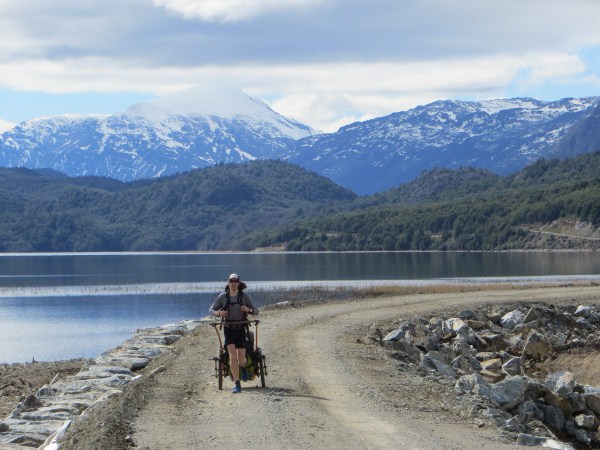
Q. 6. How many different types of snakes did you see? (Bradley)
More than 50 species (kinds) and of those more than 500 individual snakes! We only saw about 15 species alive, the rest we found squished on the roads, as they are not fast enough to escape traffic. This was very sad, but it did allow us to examine the snakes up-close, look at their amazing skin patterns and feel their soft scales. We are not snake experts and many species are very difficult to tell apart, so we took photos and made notes and now have to go through all this evidence, asking experts about any species we can’t identify. Click here for more tasty facts about snakes and our snake video!!

Q. 7. How many different types of animals did you see? – were any of them from an endangered species? (Jamie)
We have so far counted 452 different species of birds (we did a bird survey just about every day). We also recorded over 100 different species of reptiles (snakes, lizards, terrapins, tortoises, turtles), amphibians (frogs and toads), mammals and insects (wasps, bees and butterflies) and invertebrates such as spiders, millipedes and dung beetles! (To find out how to do your own bird survey click here).
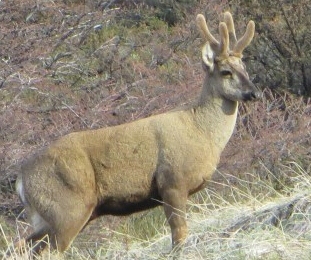
We saw many endangered species. This always makes us feel sad, that us humans are making it difficult for them to survive by changing their habitats (homes) or catching them for the pet trade etc. Each one is amazing and each one has a job to play in the natural world and often humans still don’t know how important that job is for our planet.
We crawled along a hill so we could watch the endangered Huemul Deer (click here to find out more!) in Chile and we left the road for a couple of days to visit a reserve in Bolivia where the critically endangered blue-throated macaw lives (click here to see photos of the reserve and the wildlife that lives in it).
Q. 8. Why did you choose South America rather than anywhere else in the world? (Benny)
We were not sure whether we would be able to run such a long way. If we could, we thought we would be unlikely to ever run so far again! So it had to be somewhere really fantastic for wildlife. South America is that place, it is probably the most important continent in the world for biodiversity (number of different types of animals and plants). It has for example the most species of: monkeys, birds and amphibians. Click here for more facts on South America and the countries we ran through.
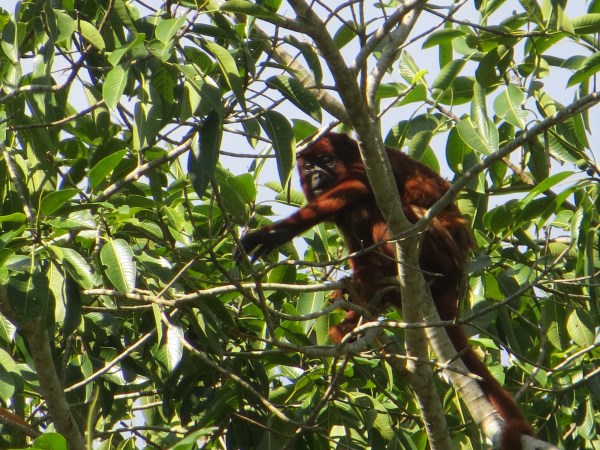
Q.9. Did you meet the Brazilian Wandering Spider? (Oliver – who thinks that this spider is the most venomous in the world according to Top Trumps)
Not knowingly! We slept in our hammocks and mosquito-net tent in the rainforests of northern Argentina, Bolivia, Brazil and Venezuela. The spider lives in all of these countries in their hot and humid forests, so we could easily have been close to one. Often when I had to to a wee in the night, I would shine my head-torch on the ground and see hundreds of little red eyes shining back at me as all the spiders and insects went about their business catching prey (their food) on the forest floor!

Q. 10 Did you have lights? (Jack)
Yes, we used head torches. Sometimes we would have to run in the dark and sometimes we would have to find hiding places to camp in the dark. But most of all we used lights when we were cooking in the evenings and when we started running really early in the morning in the tropics of Argentina, Brazl, Bolivia and Venezuela, because it was much cooler before the sun rose. Sometimes, when there was a moon or when we ran through clouds of fire flies, we didn’t need our lights. That was fantastic.
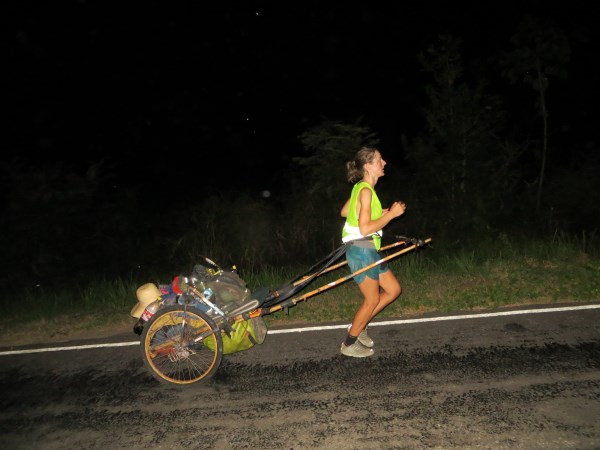
Ms Holmes Class (Year 3 and 4)
Q. 11. Did you see a rattle snake?
Unfortunately, we didn’t see or hear a rattle snake! We did see lots of other snake species though including: coral snakes, yellow rat snakes, an anaconda and boa constrictors. Click here to watch a short video about some of the snakes we saw.

Q. 12. What was the most frightening snake you saw?
Gosh, probably the yellow rat snake. We were eating our lunch under a grass hut in the Amazon rainforest of Brazil. Suddenly we heard loud squeaks. I thought it was a chick calling to its parents, but when we went to investigate, we found something altogether different.. a yellow-and-black striped snake! It had just caught a mouse and the mouse’s tail was hanging out of the snake’s mouth. We then watched the mouse-like-shape pulse down the snake’s body! The snake was very distracted by us and kept making lunging movements for us, so we were a little scared. But like many animals, the snake turned out to be more scared of us then we of it, as all of a sudden it shot down the pillar and launched into the tall grass to flea from us!
Q. 13. What was the biggest snake you saw?
An enormous boa constricta in northern Argentina. Unfotunately, it was dead after being knocked by a car, so we could not watch it move through its habitat (home) but we could look at and touch its stunning scaly skin.
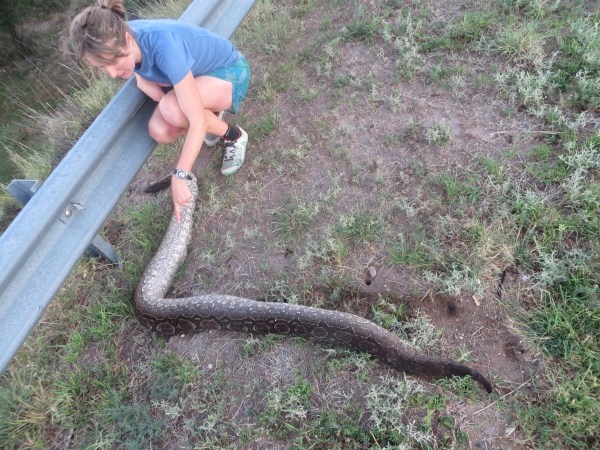
Q. 14. What was the most deadly thing you saw? Ben
The mosquitoes that buzzed in our ears every night! They kill more people then any other animal in the world.
Q. 15. What was the most exciting moment of your trip?
When out of nowhere, as were running down a road in Brazil, a mealy parrot dive-bombed Dave! It then loop-the-looped, sat in the branches above our head watching us and finally when I bent down to do up my shoelace, flew down on to my back!! Parrots bond for life with their partner, so it was an immense privilege and for someone who loves birds and was running for wildlife, one of the most incredible moments of my life!

Q. 16. How did you feel when you had done it? Katie
It was a mixture of huge relief, happiness and also incredulity (we never believed it was possible when we began!) The loveliest moment was jumping in the waves with big brown pelicans and magnificent frigatebirds circling over our heads.
Q. 17. What was the scariest thing you saw?
A cloud of wasps zooming towards me! They crawled under my t’shirt and shorts and stung me repeatedly! I ran down the road flapping my arms like a mad woman!! But I think Dave was more scared of me then I was of the wasps!
Q. 18. What was the biggest animal you saw? Sam K and Nial
A puma crossing the road in northern Argentina. It was an incredible heart-stopping moment watching such a grand, elegant, wild cat move effortlessly through the wilds. We had dreamed of seeing one since the start of our expedition, but never thought it would be possible.
Q. 19. What food did you eat? Hattie
We ate as many fresh fruits and vegetables as we could find along the way such as: mangoes, oranges and grapes, but also carried lots of dried food like pasta and rice which we could cook on our stove or a fire by the roadside.
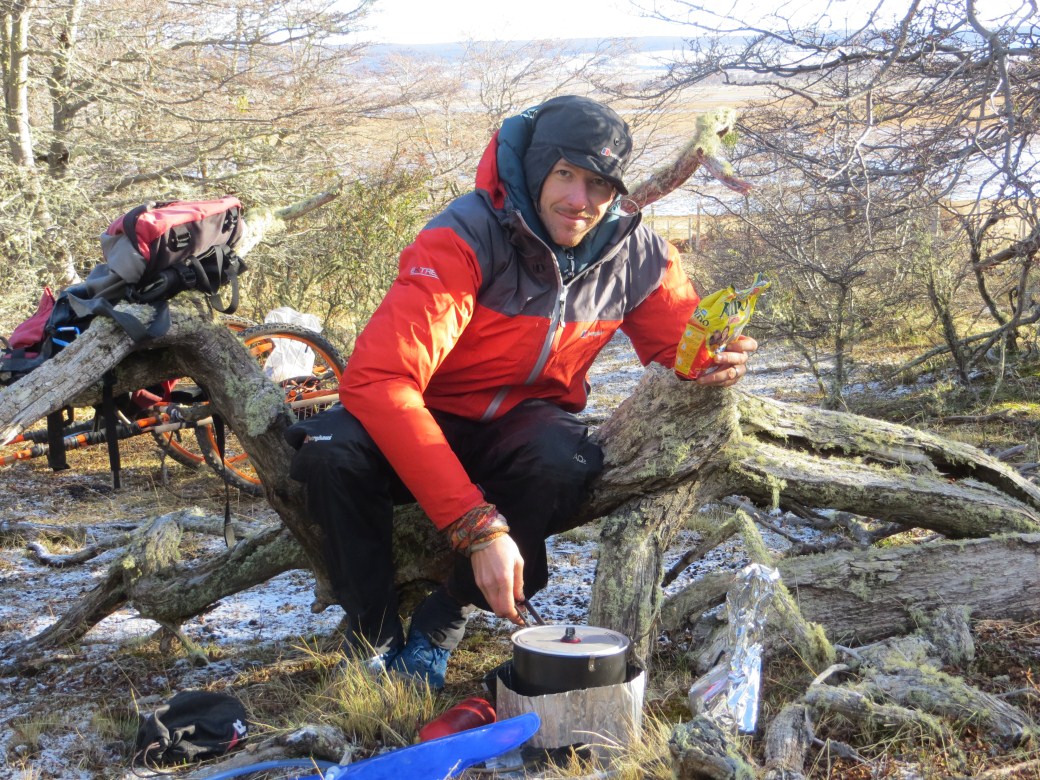
Q. 20. How did you wash? Eve
We most enjoyed swimming in rivers when we could find them. If not we would pour a few saucepans of water over our heads after running. Sometimes we could not find any water, so curled up in our tent or hammock very smelly!

Q. 21. Did you see any volcanoes?
Yes we ran passed volcanoes in Chile and Argentina in the Andes mountains. One volcano had just erupted near El Chaiten, Chile and the forest was burnt and covered with ash.

Q. 22. How many schools did you stop at? Lucy
See Archie’s Question 1. for the answer.
Q. 23. Did you have a thermometer to test the temperature? Amber
Yes we did, until it fell off the trailer! We measured the temperature every day from the below 0′ ‘C temperatures in the wintry south of Chile to the scorching above 45’C temperatures in the oven of northern Argentina.
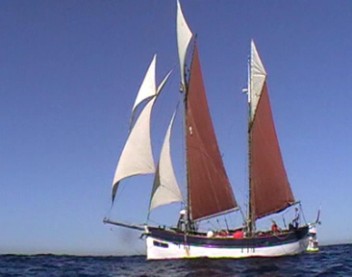
Mr Payne’s class(Year 5)
Q. 24. Jack – What do you plan to do next?
We have to return home to the UK properly by sailing back from where our ‘house’, our old boat, Lista Light is floating (hopefully!) in Uruguay. So we will have to sail up the Brazilian coastline, passed the Caribbean and across the Atlantic Ocean. We have to count lots of seabirds, dolphins and whales along the way and start writing a book about our running expedition.
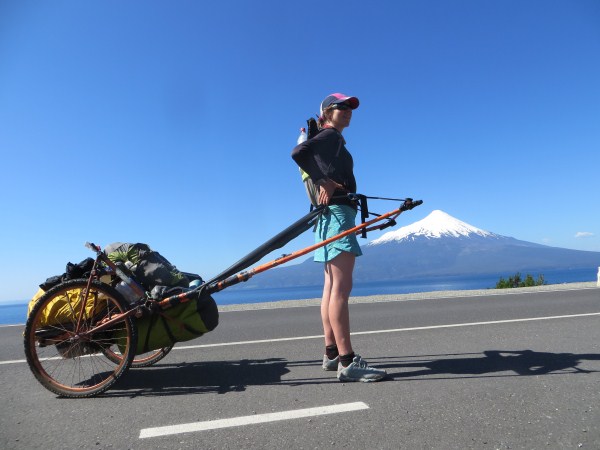
Q. 25. Faith – How long did it take you?
We ran for nearly 15 months- a very long time! We started on the first day of the London Olympics, 28 July 2012 and finished on 20 October 2013.
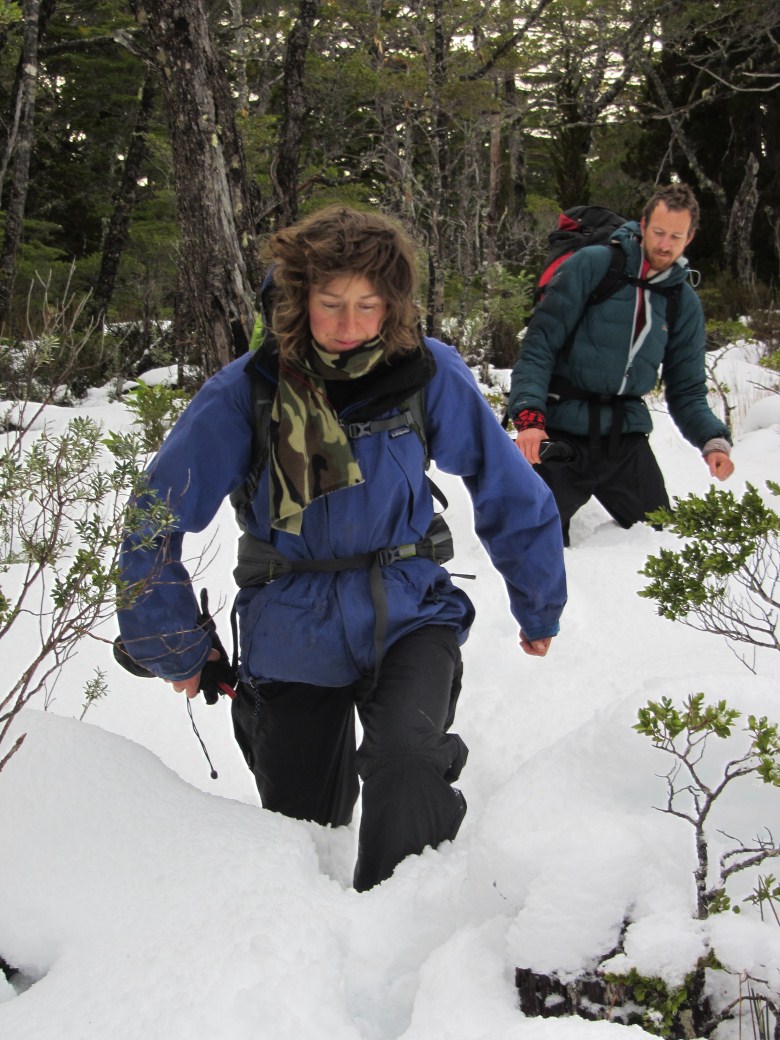
Q. 26. Logan – What was it like in the cold weather?
It was actually much easier running in the cold weather, because we could keep putting on extra clothes and once we got running we would soon warm up. In the hot weather, however, there were only so many clothes we could take off! The only problem was making space for our tent in the thick snow and when Dave’s fingers froze to the tent pegs!!
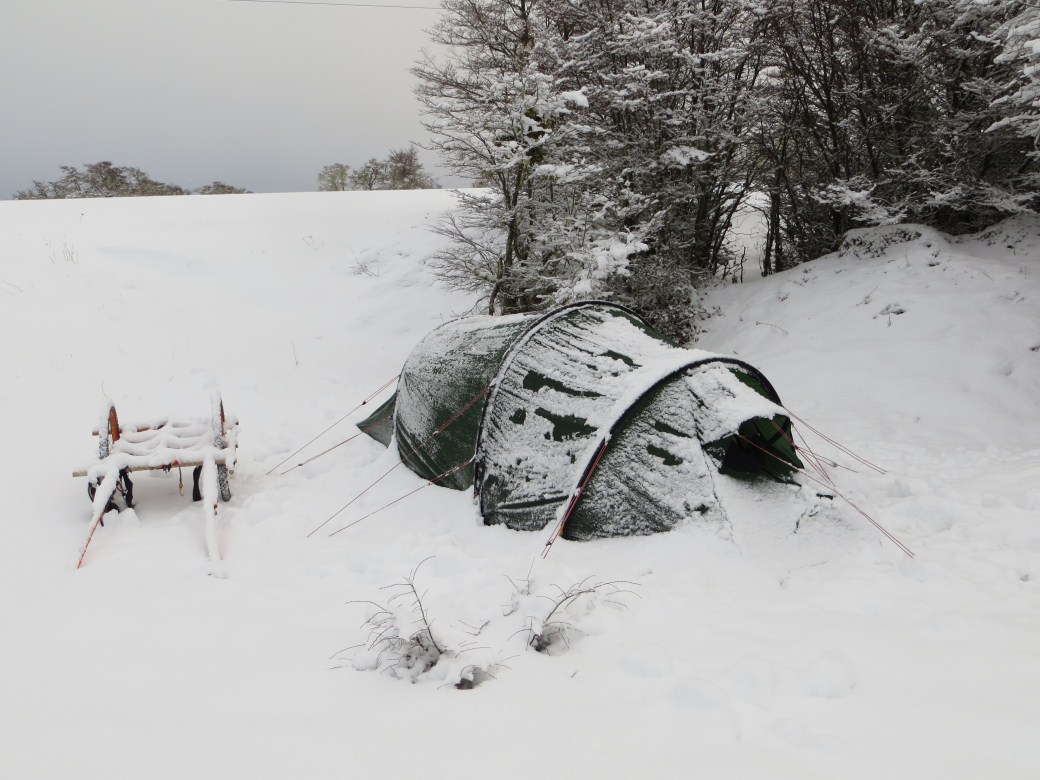
Q. 28. Michael – Did you see any dangerous animals?
Yes plenty of spiders, scorpions and snakes. The most dangerous animals, however, which we saw practically every day were human beings and mosquitoes!!
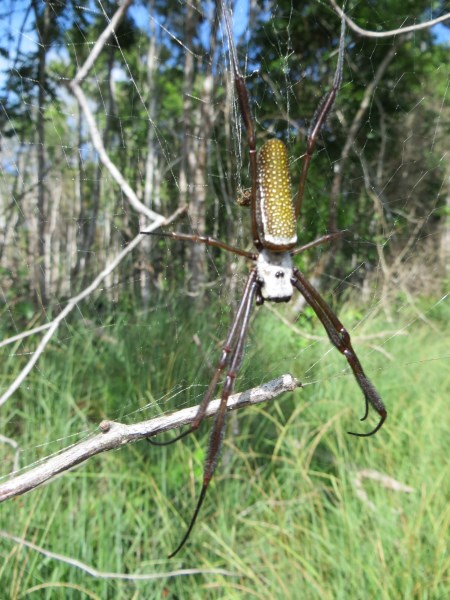
Q. 29. Scott – I’ve forgotten. Oh, wait I remember now. How was the water at the end?
The best water in the world!! We were so very happy that our dream of running the entire South American continent had come true and that we could relax and not worry about finding a place to sleep in by the side of the road nor go running at 0400 am tomorrow!
Q. 30. Eve – How did you feel when you finished?
At first we were so very excited, then it was a funny feeling almost like being lost, as we had been running with such a strong mission everyday for over one year and now that had ended. We were also extraordinarily exhausted, I could barely stand let alone talk, especially not talk in Spanish- which we had to do!!

Q. 31. Josh – What inspired you to do it?
We love the wildlife and wildplaces more than anything in the world.And there is nothing better than running through beautiful wild areas where you can get a chance to meet some of the incredible animals and plants that live in them. We wanted to show that with small steps you can overcome huge hurdles (even a continent!) to realize your dreams, including helping to look after our amazing planet that we all depend upon for our survival.
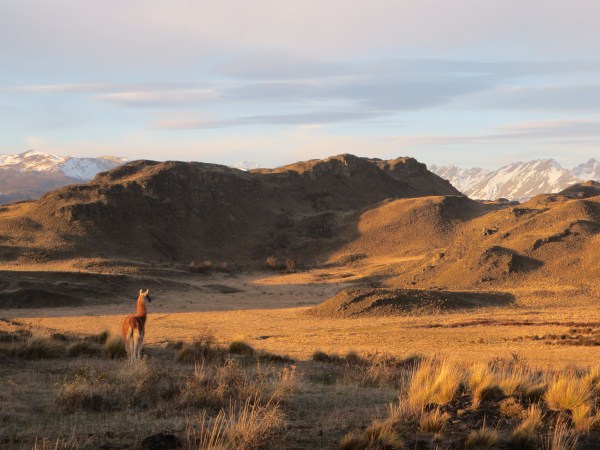
Q. 32. Libby – What was the hardest part of your journey?
When after running between 20 miles and a marathon, when we were exhausted and hungry and when we couldn’t find anywhere to camp… when someone said, “No, you can’t put your tent or hammock in our field or garden”. That was terrible, because we knew we would have to keep searching in the dark and all we wanted to do was to collapse in a heap. Luckily this only happened a handful of times and after each of those rejections we found somewhere else much better to sleep.
